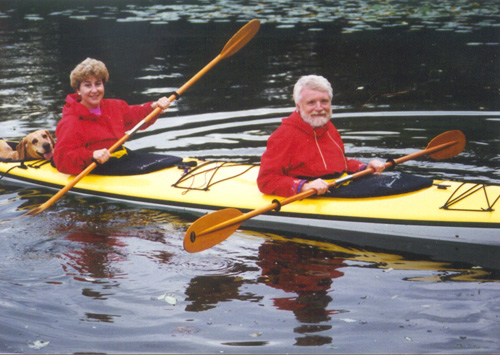[Editor's Note: The following post is authored by Paul Ponchillia, Professor Emeritus at Western Michigan University and Olympic Torch runner. Dr. Ponchillia is the founder of sports camps for children with visual impairments nationwide and also co-author of Physical Education and Sports for People with Visual Impairments and Deafblindness: Foundations of Instruction*, recently published by AFB Press.]*
If you’re a New York Times reader, perhaps you saw the November 12 article about Erik Weihenmayer, widely known as one of the world’s most accomplished athletes who is blind. He has scaled Mt. Everest and took part in Expedition Impossible, a cross-country adventure-themed reality show that aired last year. He is no stranger to adventure, having also been a skydiver, marathon runner, skier, mountaineer, and climber (both ice and rock). The article reports that Erik is working toward what may be his most difficult adventure yet: paddling the whitewater of the Colorado River through the Grand Canyon.
More than anything else, Erik has shown the world what he can do, vision or no vision. How does he do it? He is an outstanding athlete with an uncommon will to meet nearly any challenge the natural world has to offer. However, just as important, Erik has worked and worked and worked even more to figure out what might be called “work-arounds”; that is, ways to get around the physical and other barriers caused by his blindness. And he put his skills at organizing, anticipating, and thinking ahead to the best use that he could. For example, he didn’t just plan to drop his kayak in the river and take off downstream. To prepare for this newly announced adventure, he began to develop whitewater kayaking work-arounds by first learning the "combat roll" (righting the kayak after it flips), practicing with a friend in a calm lake. Later, he learned to use the feel of the current on his paddle, his ears to monitor the waves, and other tricks that would help him through the treacherous waters of the Grand Canyon.
Most of us know we can't accomplish what Erik has; however, he has shown us that we can do much more than we might at first think possible. I lost all my vision in a hunting accident at age 30, and for a while I thought my days of sports competition and wilderness activities were over. Within a year of those thoughts, my father and some friends talked me into taking a four-man (with one guide dog) canoe trip to Minnesota's Boundary Waters Canoe Area. After that, I knew I could do whatever I set my mind to.
Unfortunately, there just wasn't a good single source of literature describing recreational and sports skills, nor the work-arounds required to make them accessible to people with visual impairments, so I mostly had to learn these the hard way. I am happy and somewhat proud to announce that Lauren Lieberman, Susan Ponchillia, and I teamed up with AFB Press to publish Physical Education and Sports for People with Visual Impairments and Deafblindness: Foundations of Instruction. The book, released in October, contains information, teaching methods, lesson plans, work-arounds, and more that were field tested in Lauren's, Sue's, and my own summer sports camps for children, in our university classes, and in our own lifelong experiences in recreation and sports. It is designed to be used by people with visual impairments or deafblindness, their teachers, and their parents; by coaches; or by anyone else who might want to help adults or children with visual impairments or deafblindness learn how they might participate in sports or recreational activities.
The book opens with chapters describing the impact of visual impairment or deafblindness on people and general information about each disability. The middle chapters cover the details of teaching sports and recreational skills to preschool, elementary school, middle, and high school students, and adults. The chapters covering older students and adults contain descriptions of the major sports commonly played by people with visual impairments or deafblindness. The remaining chapters focus on recreational and fitness skills and on the major national and international sports organizations. In addition, the book's appendixes contain extensive lists of the services and products available from the vast array of sports and recreational organizations aimed at people with visual impairments or deafblindness.
I'd like to thank AFB Press for its support and assistance on this project. As we look to an individual like Erik Weihenmayer as inspiration, I hope aspiring children and adults with visual impairments will use the book as a roadmap to realize their own sports and fitness goals.
To purchase the book, please visit the bookstore at AFB Press.
Photo caption: Paul and the late Sue Ponchillia, two of the authors of the new book Physical Education and Sports for People with Visual Impairments and Deafblindness: Foundations of Instruction, in a kayak along with Paul’s dog, Ginger.
